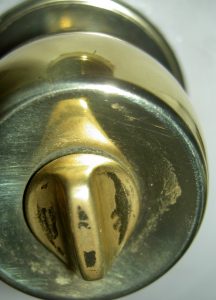Police investigating a Chicago home invasion have recovered firearms and clothing that may further link the suspects, who are already in custody, to the crime. But even if police can prove that the items belonged to the suspects, that fact alone doesn’t prove that the suspects committed the crime.
Eyewitness Testimony
The suspects were arrested based on eyewitness descriptions of the clothing they were wearing during the crime. Police found some articles of clothing and firearms discarded in fields near the location of the home invasion.
But eyewitness identifications are often faulty. According to the Innocence Project, in cases where innocence was proven through subsequent DNA testing, 70% of faulty convictions were the direct result of eyewitness misidentification.
Here, the eyewitness descriptions were based almost entirely on the victim’s clothing. Using clothing as the primary means of identification is inherently unreliable. If the clothing was not distinctive, or if the suspects were wearing a style of clothing popular with young people, an arrest based solely on the clothing description creates a possibility that the police arrested the wrong person. Add to that the inherent untrustworthiness of eyewitness identification generally – eyewitness testimony can be influence by police conduct, statements of other witnesses, news stories on the crime or the passage of time – and it makes the arrests in this case open to casting reasonable doubt that the defendants were the ones who committed the crime.
Proof of Ownership vs. Proof of Use
Proving that the suspects owned the clothing and firearms is not, in and of itself, proof that they committed the crimes.
The police can prove ownership of the guns by tracing serial numbers or matching fingerprints found on the weapons to the suspect’s fingerprints. Proving that the clothing belongs to the suspects may be a bit harder, but forensic experts can likely find hair or skin samples that would link the clothing to the suspects. It may also be easy to find images on Facebook or other social media sites that show the suspects wearing the clothing.
To prove that the suspects committed the crime, the prosecution must obtain forensic evidence that shows the suspects used the items during the commission of the crime. A jury would expect that the owner’s fingerprints would be on the weapon, so that alone does not prove that the suspect was the one who fired the weapon during the home invasion. The weapon could have been stolen, or the suspect could have lent it to a friend or family member who then used it during the crime. The prosecution must have other proof, such as gunpowder residue found on the suspect, to prove that he fired the weapon.
The same is true of the clothing. Even if the prosecution can prove that the suspects owned the specific items of clothing police uncovered, they must prove that they were the ones who actually wore it during the crime, rather than it having been stolen or borrowed by somebody else.
So the defense strategy in this specific case would rely heavily on disputing the prosecution’s forensic evidence linking the items recovered to the suspect’s use and possession during the commission of the crime. An independent forensic expert would examine all of the prosecution’s evidence to determine if the firearms and clothing could have been used by anybody other than the suspects.
Continue reading
 In Bloomington, a verdict hangs in the air around a 2016 home invasion case. An armed robbery occurred in the home of a Bloomington couple, and the defendant is being charged with attempted murder, armed robbery, home invasion, and a weapons charge. One member of the group of three posed as a pizza delivery man and made his way into the home, at which point the group demanded $40,000 in cash from the couple. While the details of the cash remain contested, and the total number of men involved and their degree of involvement is debatable, what remains clear is that home invasion happens all too frequently. When it does, victims need an attorney with a history of fighting criminal issues in Chicago.
In Bloomington, a verdict hangs in the air around a 2016 home invasion case. An armed robbery occurred in the home of a Bloomington couple, and the defendant is being charged with attempted murder, armed robbery, home invasion, and a weapons charge. One member of the group of three posed as a pizza delivery man and made his way into the home, at which point the group demanded $40,000 in cash from the couple. While the details of the cash remain contested, and the total number of men involved and their degree of involvement is debatable, what remains clear is that home invasion happens all too frequently. When it does, victims need an attorney with a history of fighting criminal issues in Chicago. Chicago Criminal Lawyer Blog
Chicago Criminal Lawyer Blog




